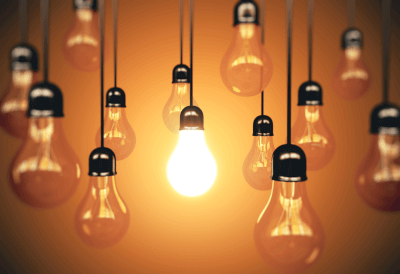What Is an Incandescent Lamp?

An incandescent lamp is a lighting device that emits light by heating a filament inside a glass enclosure to temperatures between 2,000 and 3,000°C. A variant, the halogen lamp, uses a halogen gas-filled glass tube to prolong its lifespan.
Despite their higher energy consumption and shorter lifespan compared to fluorescent lamps and LEDs, incandescent lamps remain in use for their dimmability and unique color production, particularly in retail and commercial settings.
Uses of Incandescent Lamps
Historically favored for their low installation cost and superior color quality, incandescent lamps have found niche applications that capitalize on these attributes. They offer a continuous spectral distribution, unlike the peaky distribution of fluorescent lamps and LEDs, making them ideal for settings where natural color rendition is critical, such as restaurants and living rooms.
Structure of Incandescent Lamps
Comprising a mouthpiece, tungsten filament, and glass tube filled with an inert gas like argon or nitrogen, incandescent lamps are designed to efficiently convert electricity into light.
1. Support Wire
Introduces electricity into the bulb, typically made of nickel wire.
2. Sealing Wire
Leads electricity into the bulb through the base, using copper-coated nickel steel wire, with halogen lamps often utilizing thin molybdenum foil.
3. Fuse Wire
Acts as a safety feature to prevent overcurrent, made from constantan wire.
4. Filament
The primary light-emitting component of the lamp.
5. Anchor
Supports the filament using molybdenum wire.
6. Bulb
Encloses the filament, made from either soft soda glass, hard borosilicate glass, or quartz glass for halogen lamps.
Principle of Incandescent Lamps
Light is generated when an electric current heats the filament inside the bulb, emitting light across a continuous spectrum with a peak in the infrared. Argon or nitrogen gas within the bulb prevents the filament from deteriorating quickly.
Halogen lamps enhance luminous efficiency through higher operating temperatures, using quartz glass and halogen gas to prolong filament life via a regenerative cycle.
Types of Incandescent Lamps
Various designs cater to different lighting needs, from decorative to functional.
1. Silica Bulb
Offers a simple design with a frosted finish for diffused light.
2. Clear Bulb
Provides high brightness with a transparent enclosure for sparkling light effects.
3. Ball Bulb
Delivers a soft, ambient light with its spherical shape.
4. Mini Light Bulb
Small, with a shorter lifespan, suitable for frequent replacement.
5. Small Round Bulb
Compact and durable, with a lifespan of up to 5,000 hours.
6. Reflex Bulb
Features an internal reflector for directed lighting, ideal for spotlighting.
7. Krypton Bulb
Lasts twice as long as standard bulbs, with about 10% reduced power consumption.
8. Mini Krypton Bulb
Small but bright, used for accent lighting in bathrooms and vanity areas.
9. Chandelier Bulb
Designed to mimic the appearance of flames, enhancing the aesthetic of chandeliers and pendant lights.